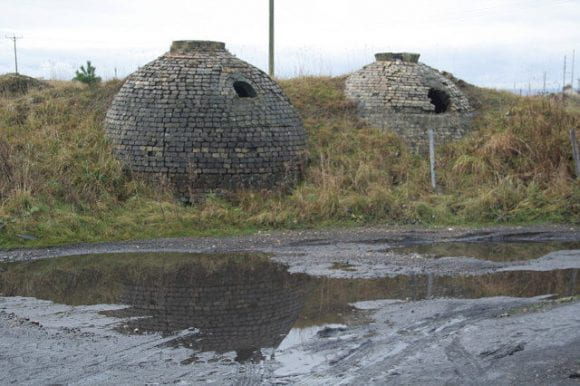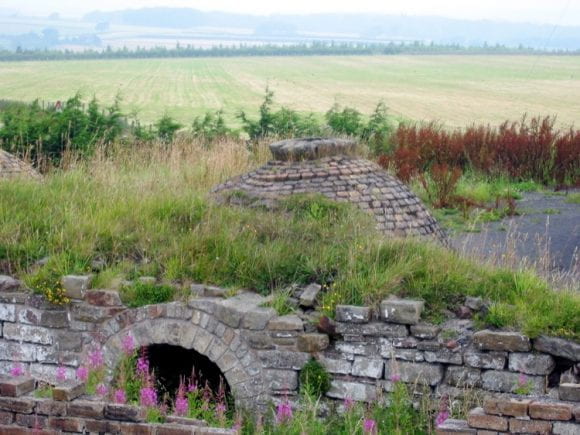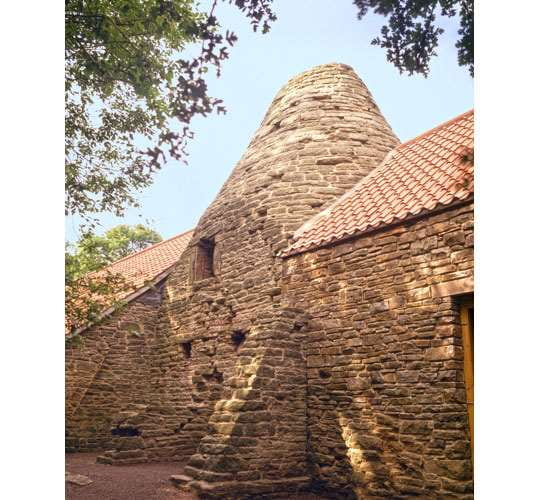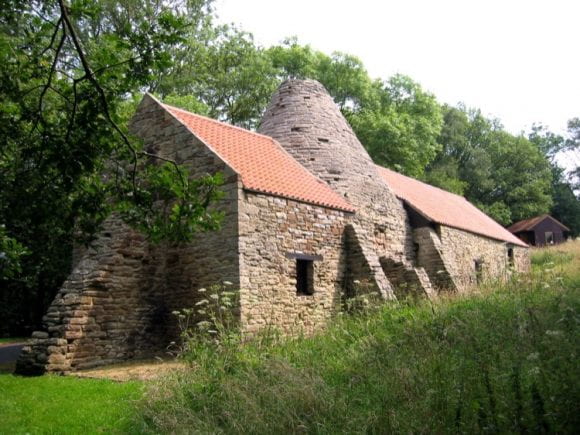
Beehive coke ovens at the old Inkerman Colliery in Tow Law. They were used to make cookie from coal, which was used in smelting iron. There were 14,000 beehive coke ovens in England in 1875.

Tow Law beehive coke oven ruins


Derwentcote Steel furnace in Rowlands Gill, near Newcastle on Tyne, was built in the 1730s. It was used for cementation, a process which converted wrought iron into steel. The conical chimney houses two sandstone chests into which iron bars were packed with alternate layers of charcoal powder. When the fire was lit and the chests sealed, flames and heat travelled up through flues and chimneys around them, and temperatures reached 1,100°C. This heat enabled the carbon from the charcoal to diffuse into the iron. Each cementation cycle, or ‘heat’, took three weeks, producing about 10 tons of steel. The firing took 6–10 days and the furnace was then allowed to cool for a week, before the bars could be extracted.

Interior view of the Derwentcote steel furnace.

Derwencote Cementation steel furnace, 1730s.

Derwencote Cementation steel furnace, 1720
